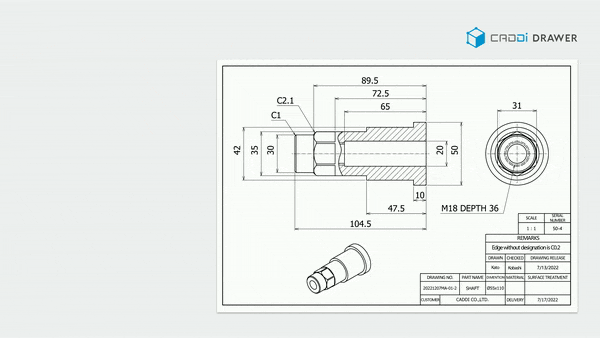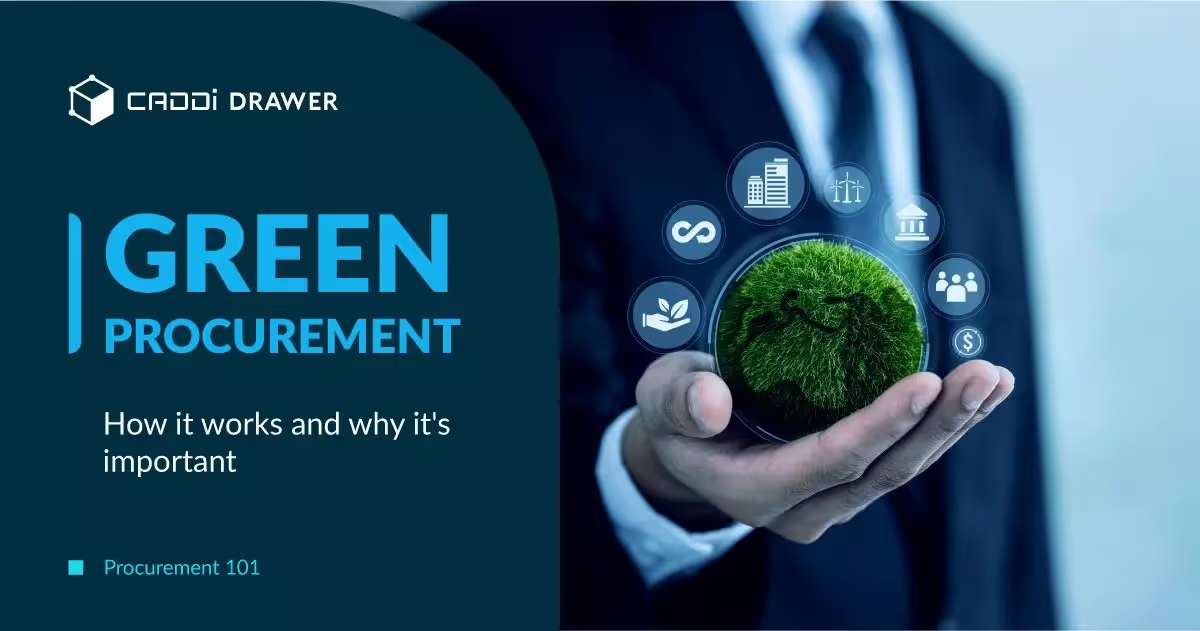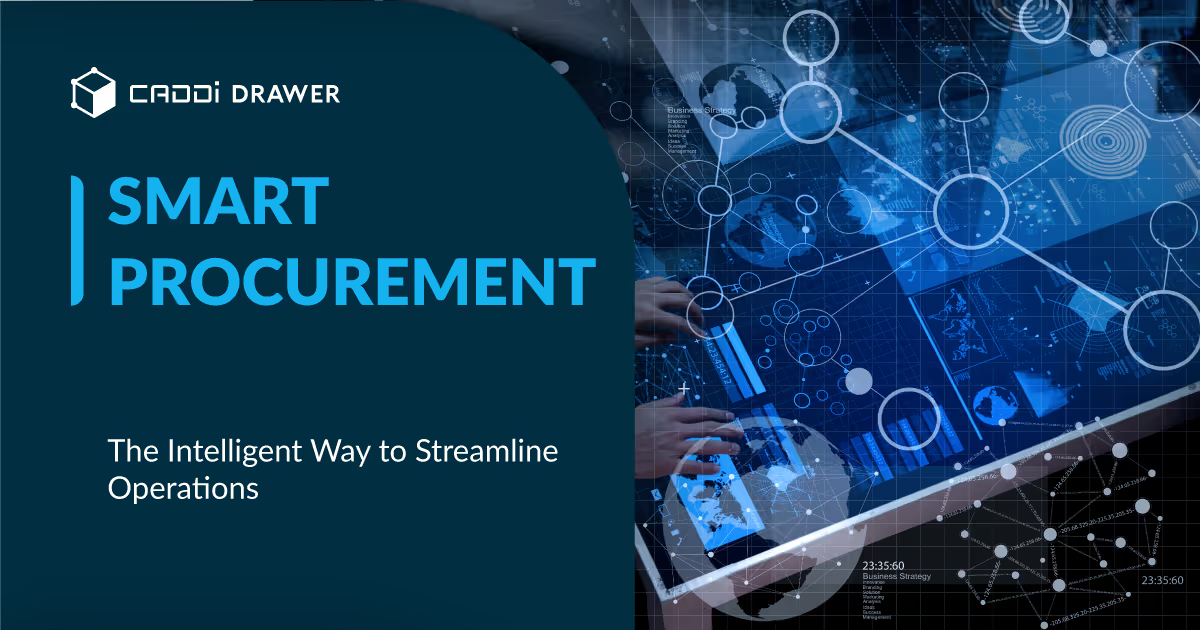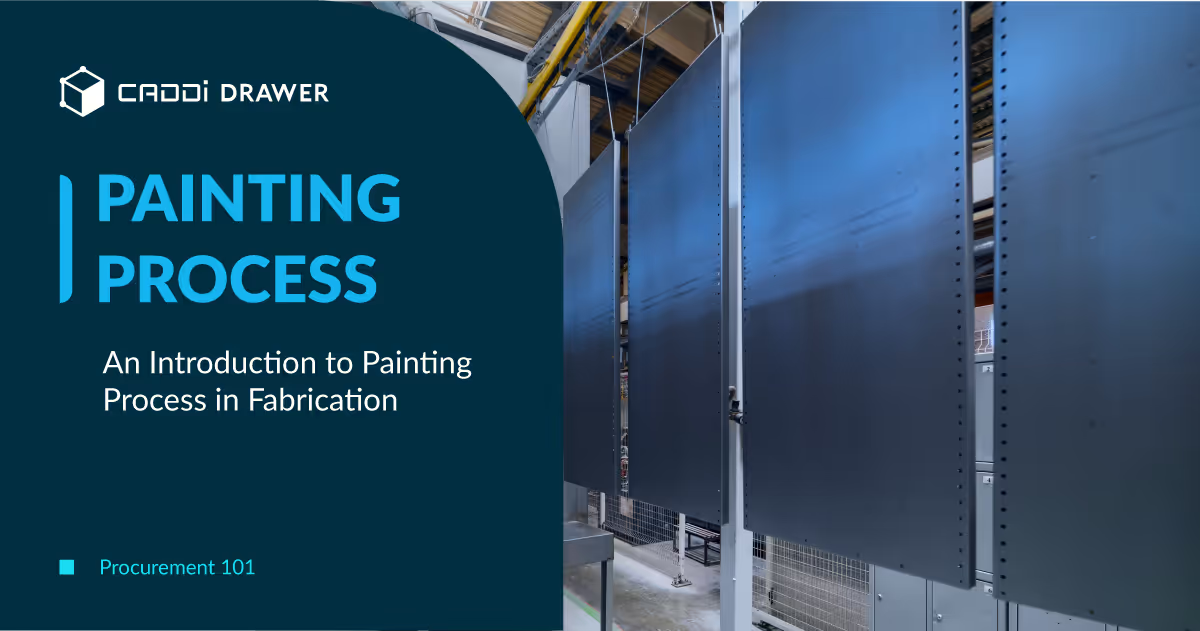Procurement 101: Procurement Department – Navigating New Trends and Key Roles

Table of Contents

Amidst the relentless pace of innovation and the shifting dynamics of global markets, the procurement department stands as a pivotal element in the strategic arsenal of modern businesses. This department, once viewed as a back-office function, has transformed into a key driver of competitive advantage, efficiency, and sustainability. As companies navigate through complexities and strive for agility, understanding the nuanced roles within procurement and keeping a pulse on emerging trends has never been more critical
This article discusses the significance and evolving position of procurement departments, their key roles, and future outlooks.
The Evolving Landscape of Procurement
The evolution of the procurement department reflects the broader transformations within global business practices, technological advancements, and strategic management thinking. Traditionally, procurement’s role was primarily transactional, focusing on the straightforward purchase of goods and services at the lowest possible cost. However, this view has dramatically shifted over the years, with the procurement function now playing a critical, strategic role in organizations. This evolution has been influenced by several key developments:
1. From Cost Focus to Strategic Partnering
Initially, procurement aimed to minimize direct costs. Over time, its role expanded to include forming strategic partnerships with suppliers. This shift was driven by the recognition that suppliers could significantly contribute to an organization’s innovation, quality improvement, and overall competitive advantage. Today, procurement departments are not just negotiating prices but also collaborating with suppliers to drive sustainability initiatives, technological advancements, and process improvements.
2. Adoption of Technology
Technological advancements have profoundly impacted procurement. The introduction of e-procurement systems, cloud-based solutions, and digital marketplaces has streamlined processes, reduced costs, and enhanced transparency. Technologies like AI and machine learning are now being leveraged for supplier selection, risk management, and predictive analytics, enabling more informed decision-making. The digital transformation within procurement has also improved collaboration with suppliers and internal stakeholders, making the procurement process more agile and efficient.
3. Focus on Sustainability and Ethics
The growing emphasis on sustainability, corporate social responsibility (CSR), and ethics has significantly influenced procurement practices. Organizations are increasingly assessing suppliers not just on cost and quality, but also on their environmental impact, labor practices, and governance. This shift has led to the development of sustainable procurement policies and practices that prioritize long-term environmental and social value alongside traditional economic considerations.
4. Globalization and Supply Chain Complexity
As businesses have become more global, procurement departments have had to navigate increasingly complex supply chains that span multiple countries and regulatory environments. This complexity has required procurement to develop sophisticated risk management strategies, diversify supplier bases, and ensure compliance across different jurisdictions. The globalization of supply chains has also prompted procurement to focus on flexibility and resilience, particularly in response to disruptions such as natural disasters, trade disputes, and pandemics.
5. Strategic Sourcing and Category Management
Procurement departments have moved towards strategic sourcing and category management approaches to optimize spending and enhance value across the organization. This involves a deep analysis of spending categories, market conditions, and supplier capabilities to develop differentiated strategies that can drive innovation, reduce costs, and mitigate risks. Category management allows organizations to leverage their purchasing power and develop more collaborative relationships with key suppliers.
6. The Rise of Procurement Analytics
Data analytics has become a cornerstone of modern procurement practices. Procurement departments use analytics to gain insights into spending patterns, supplier performance, and market trends. This data-driven approach supports more strategic decision-making, helping organizations to identify savings opportunities, optimize their supplier base, and forecast future procurement needs.
7. Increased Focus on Risk Management
In today’s volatile business environment, procurement departments play a crucial role in managing risk. This includes not only supply chain risks but also financial, reputational, and compliance risks. Procurement professionals develop and implement risk management frameworks that monitor and mitigate potential disruptions and ensure business continuity.
The evolution of the procurement department from a transactional function to a strategic cornerstone of organizational success underscores its critical role in driving competitive advantage, innovation, and sustainability. As businesses continue to face rapidly changing markets and increasing complexities, the strategic importance of procurement is set to grow even further.
Key Roles in the Modern Procurement Department
Chief Procurement Officer (CPO)
The CPO stands at the helm of the procurement department, steering the organization towards strategic procurement excellence. This role involves not just leading the procurement team but also crafting and implementing purchasing policies that resonate with the organization’s strategic objectives. The CPO takes charge of cultivating and managing supplier relationships, ensuring that these partnerships contribute to reducing costs and elevating the quality of procurements. They also play a pivotal role in integrating sustainable and ethical procurement practices, aligning with global standards and expectations.
Director of Procurement
Armed with deep market insights, the Director of Procurement is crucial in analyzing bids, quotes, and overseeing the acquisition of supplies while vigilantly maintaining the organization’s budget. Their expertise in market trends and supplier capabilities allows them to influence strategic planning and decision-making processes significantly within the procurement department. They ensure that procurement strategies are agile, responsive to market changes, and aligned with the organizational growth trajectory.
Procurement Manager
The Procurement Manager is the operational backbone of the department, managing the day-to-day procurement activities with precision. From identifying potential suppliers to negotiating agreements and managing contracts, they ensure a seamless and efficient procurement process. Their role is critical in maintaining a steady flow of goods and services, enabling the organization to meet its operational demands while optimizing costs and quality.
Procurement Analyst
The Procurement Analyst serves as the department’s intelligence unit, conducting thorough market research and supplier evaluations. By negotiating contracts and preparing detailed cost reports, they provide essential analytical support that aids in making informed purchasing decisions. Their analyses help in identifying cost-saving opportunities and optimizing the overall procurement strategy.
Category Manager
With a focus on efficient management of procurement categories, the Category Manager develops strategies for specific product categories. They work closely with vendors to ensure the best pricing, quality of services, and foster strong, mutually beneficial relationships. Their strategic approach to category management maximizes value and supports the organization’s objectives.
Strategic Sourcing Manager
Focusing on high-value purchases, the Strategic Sourcing Manager undertakes in-depth analysis and strategy development. Their role ensures that procurement activities are not just transactional but strategic, supporting the organization’s long-term goals and delivering significant value.
Supply Chain Manager
With oversight of the entire supply chain, from raw material procurement to the delivery of the final product, the Supply Chain Manager optimizes efficiency and reduces costs across the board. Their strategic management of the supply chain ensures that the organization can meet its production and distribution demands effectively.
Material Manager
Overseeing the acquisition, distribution, and storage of materials, the Material Manager ensures that inventory is managed efficiently. They play a key role in negotiating with suppliers, controlling costs, and guaranteeing the quality of materials, directly supporting the organization’s operational needs.
Commodity Manager
The Commodity Manager specializes in the strategic procurement of specific goods or services. Through conducting market analysis and developing sourcing strategies, they manage supplier relationships and mitigate risks, ensuring the organization secures the best possible value.
Inventory Manager
The Inventory Manager is responsible for maintaining optimal inventory levels and ordering supplies as needed. It is not merely a role for managing inventory, but also one that should provide feedback to purchasers, production departments, and sales departments through observing fluctuations in inventory, differences with demand forecasts.
Procurement Specialist
Specializing in budget estimation, sourcing operations, and negotiation, the Procurement Specialist ensures effective communication with stakeholders and assists in asset management. Their expertise in navigating the procurement landscape ensures that purchasing activities are conducted efficiently, aligning with the organization’s budgetary and operational needs.
Contract Specialist
This role focuses on the development, compliance, and evaluation of contracts, ensuring that all procurement activities are in strict adherence to organizational policies and regulations. The Contract Specialist plays a key role in safeguarding the organization’s interests, mitigating risks, and ensuring that contracts are both beneficial and legally sound.
Financial Control Business Partner and Legal Business Partner
These roles provide critical support to the procurement department by reviewing commercial performance, offering financial analysis, and advising on legal risks. Their insights and advice are instrumental in shaping procurement strategies that are financially viable and legally compliant.
Future Outlook and Trends in Procurement
Digital Transformation and Generative AI
Digital transformation continues to be a key strategy for procurement, with generative AI emerging as a significant trend. Predicted to contribute substantially to the global economy, AI’s benefits for procurement include increased efficiency, productivity, in-depth market analysis, risk mitigation, and sustainability. This adoption marks a shift towards leveraging technology for strategic advantages across various procurement functions.
Sustainability and Collaboration
Sustainability principles are increasingly becoming intertwined with procurement operations, highlighting the sector’s role in promoting sustainable practices. Collaboration with suppliers and stakeholders is essential for fostering long-term relationships, enhancing supply chain transparency, and driving innovation. This collaborative approach is crucial for achieving sustainability goals and fostering an inclusive supplier ecosystem.
Diversity and Future Enhancement of Strategic Sourcing
Diversity in supplier programs addresses both ethical considerations and strategic organizational benefits. Strategic sourcing aligns procurement efforts with business objectives, impacting key areas such as cost, resilience, and innovation. This alignment is critical for navigating the complexities of modern supply chains and ensuring organizational sustainability and growth.
Risk Management and People Culture
The emphasis on effective risk management and resilient operations has been magnified by recent global disruptions. A people-centric approach is vital for addressing talent acquisition challenges and fostering a culture that supports procurement transformation. Cultivating a diverse and skilled workforce is fundamental for the department’s success in a rapidly changing business environment.
Data Analytics and Governance
Data and analytics are pivotal for informed decision-making and supporting sustainable initiatives. A unified approach to understanding data ecosystems and aligning technology partners with specific use cases is crucial. Governance and compliance are also evolving to ensure the resilience and safety of the industry as technological innovations continue to grow.
How CADDi Drawer can assist in the further evolution of procurement departments
In response to the above future outlooks, CADDi Drawer can support various aspects such as leveraging Digital Transformation and AI, collaboration with suppliers, promotion of Strategic Sourcing, and Data Analytics.
Assetization of Drawing Data
By leveraging CADDi Drawer, it is possible to automatically extract unstructured data from drawings and digitize and store it as structured data. In this way, information that would otherwise be buried in image files or media as drawings can be treated as an asset that can be utilized across the procurement department for the future.

Streamline activities in the procurement process
The following features enable you to streamline the time-consuming tasks of data collection and organization in procurement operations.
- Price data and supplier information can be automatically linked to each drawing and can also be exported together.
- By using keyword searches combined with similarity searches, the time spent searching for drawings and data in procurement tasks can be reduced.

Similarity search of part drawings
The similarity search function allows for the identification of which categories should be consolidated with which suppliers, based on price information and supplier information for each part category. This functionality makes strategic sourcing and category management much easier to execute.

Furthermore, the assetization of data across procurement departments through CADDi Drawer, along with the sharing of knowledge, should also support challenges in talent acquisition and development.
Amidst the relentless pace of innovation and the shifting dynamics of global markets, the procurement department stands as a pivotal element in the strategic arsenal of modern businesses. This department, once viewed as a back-office function, has transformed into a key driver of competitive advantage, efficiency, and sustainability. As companies navigate through complexities and strive for agility, understanding the nuanced roles within procurement and keeping a pulse on emerging trends has never been more critical
This article discusses the significance and evolving position of procurement departments, their key roles, and future outlooks.
The Evolving Landscape of Procurement
The evolution of the procurement department reflects the broader transformations within global business practices, technological advancements, and strategic management thinking. Traditionally, procurement’s role was primarily transactional, focusing on the straightforward purchase of goods and services at the lowest possible cost. However, this view has dramatically shifted over the years, with the procurement function now playing a critical, strategic role in organizations. This evolution has been influenced by several key developments:
1. From Cost Focus to Strategic Partnering
Initially, procurement aimed to minimize direct costs. Over time, its role expanded to include forming strategic partnerships with suppliers. This shift was driven by the recognition that suppliers could significantly contribute to an organization’s innovation, quality improvement, and overall competitive advantage. Today, procurement departments are not just negotiating prices but also collaborating with suppliers to drive sustainability initiatives, technological advancements, and process improvements.
2. Adoption of Technology
Technological advancements have profoundly impacted procurement. The introduction of e-procurement systems, cloud-based solutions, and digital marketplaces has streamlined processes, reduced costs, and enhanced transparency. Technologies like AI and machine learning are now being leveraged for supplier selection, risk management, and predictive analytics, enabling more informed decision-making. The digital transformation within procurement has also improved collaboration with suppliers and internal stakeholders, making the procurement process more agile and efficient.
3. Focus on Sustainability and Ethics
The growing emphasis on sustainability, corporate social responsibility (CSR), and ethics has significantly influenced procurement practices. Organizations are increasingly assessing suppliers not just on cost and quality, but also on their environmental impact, labor practices, and governance. This shift has led to the development of sustainable procurement policies and practices that prioritize long-term environmental and social value alongside traditional economic considerations.
4. Globalization and Supply Chain Complexity
As businesses have become more global, procurement departments have had to navigate increasingly complex supply chains that span multiple countries and regulatory environments. This complexity has required procurement to develop sophisticated risk management strategies, diversify supplier bases, and ensure compliance across different jurisdictions. The globalization of supply chains has also prompted procurement to focus on flexibility and resilience, particularly in response to disruptions such as natural disasters, trade disputes, and pandemics.
5. Strategic Sourcing and Category Management
Procurement departments have moved towards strategic sourcing and category management approaches to optimize spending and enhance value across the organization. This involves a deep analysis of spending categories, market conditions, and supplier capabilities to develop differentiated strategies that can drive innovation, reduce costs, and mitigate risks. Category management allows organizations to leverage their purchasing power and develop more collaborative relationships with key suppliers.
6. The Rise of Procurement Analytics
Data analytics has become a cornerstone of modern procurement practices. Procurement departments use analytics to gain insights into spending patterns, supplier performance, and market trends. This data-driven approach supports more strategic decision-making, helping organizations to identify savings opportunities, optimize their supplier base, and forecast future procurement needs.
7. Increased Focus on Risk Management
In today’s volatile business environment, procurement departments play a crucial role in managing risk. This includes not only supply chain risks but also financial, reputational, and compliance risks. Procurement professionals develop and implement risk management frameworks that monitor and mitigate potential disruptions and ensure business continuity.
The evolution of the procurement department from a transactional function to a strategic cornerstone of organizational success underscores its critical role in driving competitive advantage, innovation, and sustainability. As businesses continue to face rapidly changing markets and increasing complexities, the strategic importance of procurement is set to grow even further.
Key Roles in the Modern Procurement Department
Chief Procurement Officer (CPO)
The CPO stands at the helm of the procurement department, steering the organization towards strategic procurement excellence. This role involves not just leading the procurement team but also crafting and implementing purchasing policies that resonate with the organization’s strategic objectives. The CPO takes charge of cultivating and managing supplier relationships, ensuring that these partnerships contribute to reducing costs and elevating the quality of procurements. They also play a pivotal role in integrating sustainable and ethical procurement practices, aligning with global standards and expectations.
Director of Procurement
Armed with deep market insights, the Director of Procurement is crucial in analyzing bids, quotes, and overseeing the acquisition of supplies while vigilantly maintaining the organization’s budget. Their expertise in market trends and supplier capabilities allows them to influence strategic planning and decision-making processes significantly within the procurement department. They ensure that procurement strategies are agile, responsive to market changes, and aligned with the organizational growth trajectory.
Procurement Manager
The Procurement Manager is the operational backbone of the department, managing the day-to-day procurement activities with precision. From identifying potential suppliers to negotiating agreements and managing contracts, they ensure a seamless and efficient procurement process. Their role is critical in maintaining a steady flow of goods and services, enabling the organization to meet its operational demands while optimizing costs and quality.
Procurement Analyst
The Procurement Analyst serves as the department’s intelligence unit, conducting thorough market research and supplier evaluations. By negotiating contracts and preparing detailed cost reports, they provide essential analytical support that aids in making informed purchasing decisions. Their analyses help in identifying cost-saving opportunities and optimizing the overall procurement strategy.
Category Manager
With a focus on efficient management of procurement categories, the Category Manager develops strategies for specific product categories. They work closely with vendors to ensure the best pricing, quality of services, and foster strong, mutually beneficial relationships. Their strategic approach to category management maximizes value and supports the organization’s objectives.
Strategic Sourcing Manager
Focusing on high-value purchases, the Strategic Sourcing Manager undertakes in-depth analysis and strategy development. Their role ensures that procurement activities are not just transactional but strategic, supporting the organization’s long-term goals and delivering significant value.
Supply Chain Manager
With oversight of the entire supply chain, from raw material procurement to the delivery of the final product, the Supply Chain Manager optimizes efficiency and reduces costs across the board. Their strategic management of the supply chain ensures that the organization can meet its production and distribution demands effectively.
Material Manager
Overseeing the acquisition, distribution, and storage of materials, the Material Manager ensures that inventory is managed efficiently. They play a key role in negotiating with suppliers, controlling costs, and guaranteeing the quality of materials, directly supporting the organization’s operational needs.
Commodity Manager
The Commodity Manager specializes in the strategic procurement of specific goods or services. Through conducting market analysis and developing sourcing strategies, they manage supplier relationships and mitigate risks, ensuring the organization secures the best possible value.
Inventory Manager
The Inventory Manager is responsible for maintaining optimal inventory levels and ordering supplies as needed. It is not merely a role for managing inventory, but also one that should provide feedback to purchasers, production departments, and sales departments through observing fluctuations in inventory, differences with demand forecasts.
Procurement Specialist
Specializing in budget estimation, sourcing operations, and negotiation, the Procurement Specialist ensures effective communication with stakeholders and assists in asset management. Their expertise in navigating the procurement landscape ensures that purchasing activities are conducted efficiently, aligning with the organization’s budgetary and operational needs.
Contract Specialist
This role focuses on the development, compliance, and evaluation of contracts, ensuring that all procurement activities are in strict adherence to organizational policies and regulations. The Contract Specialist plays a key role in safeguarding the organization’s interests, mitigating risks, and ensuring that contracts are both beneficial and legally sound.
Financial Control Business Partner and Legal Business Partner
These roles provide critical support to the procurement department by reviewing commercial performance, offering financial analysis, and advising on legal risks. Their insights and advice are instrumental in shaping procurement strategies that are financially viable and legally compliant.
Future Outlook and Trends in Procurement
Digital Transformation and Generative AI
Digital transformation continues to be a key strategy for procurement, with generative AI emerging as a significant trend. Predicted to contribute substantially to the global economy, AI’s benefits for procurement include increased efficiency, productivity, in-depth market analysis, risk mitigation, and sustainability. This adoption marks a shift towards leveraging technology for strategic advantages across various procurement functions.
Sustainability and Collaboration
Sustainability principles are increasingly becoming intertwined with procurement operations, highlighting the sector’s role in promoting sustainable practices. Collaboration with suppliers and stakeholders is essential for fostering long-term relationships, enhancing supply chain transparency, and driving innovation. This collaborative approach is crucial for achieving sustainability goals and fostering an inclusive supplier ecosystem.
Diversity and Future Enhancement of Strategic Sourcing
Diversity in supplier programs addresses both ethical considerations and strategic organizational benefits. Strategic sourcing aligns procurement efforts with business objectives, impacting key areas such as cost, resilience, and innovation. This alignment is critical for navigating the complexities of modern supply chains and ensuring organizational sustainability and growth.
Risk Management and People Culture
The emphasis on effective risk management and resilient operations has been magnified by recent global disruptions. A people-centric approach is vital for addressing talent acquisition challenges and fostering a culture that supports procurement transformation. Cultivating a diverse and skilled workforce is fundamental for the department’s success in a rapidly changing business environment.
Data Analytics and Governance
Data and analytics are pivotal for informed decision-making and supporting sustainable initiatives. A unified approach to understanding data ecosystems and aligning technology partners with specific use cases is crucial. Governance and compliance are also evolving to ensure the resilience and safety of the industry as technological innovations continue to grow.
How CADDi Drawer can assist in the further evolution of procurement departments
In response to the above future outlooks, CADDi Drawer can support various aspects such as leveraging Digital Transformation and AI, collaboration with suppliers, promotion of Strategic Sourcing, and Data Analytics.
Assetization of Drawing Data
By leveraging CADDi Drawer, it is possible to automatically extract unstructured data from drawings and digitize and store it as structured data. In this way, information that would otherwise be buried in image files or media as drawings can be treated as an asset that can be utilized across the procurement department for the future.

Streamline activities in the procurement process
The following features enable you to streamline the time-consuming tasks of data collection and organization in procurement operations.
- Price data and supplier information can be automatically linked to each drawing and can also be exported together.
- By using keyword searches combined with similarity searches, the time spent searching for drawings and data in procurement tasks can be reduced.

Similarity search of part drawings
The similarity search function allows for the identification of which categories should be consolidated with which suppliers, based on price information and supplier information for each part category. This functionality makes strategic sourcing and category management much easier to execute.

Furthermore, the assetization of data across procurement departments through CADDi Drawer, along with the sharing of knowledge, should also support challenges in talent acquisition and development.
Ready to see CADDi Drawer in action? Get a personalized demo.
Subscribe to our Blog!
Related Resources












.svg)



.svg)
.svg)
.svg)


